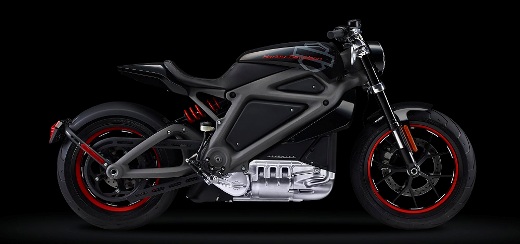
The Harley-Davidson LiveWire: A totally different Harley that’s still a Harley.
Even if Harley-Davidson never builds or sells a single LiveWire electric motorcycle, the project has been a success, just from the reams of publicity it has generated. Magazines and websites that probably didn’t even know electric motorcycles existed were suddenly writing about the LiveWire because the dominant motorcycle manufacturer in the United States did something so dramatic. So un-Harley-like.
But is the LiveWire really un-Harley-like? After riding it, I believe the LiveWire very much reflects Harley DNA, in ways both good and bad. The end result, in at least one case (and this is just my opinion), is that the LiveWire loses some of the inherent benefits of an electric motorcycle in order to be more like a Harley, even if it’s a Harley that’s miles different from anything the Motor Company has ever produced.
I’ll admit, it doesn’t look that way on the surface. The LiveWire is a radical departure, at first glance. A company that doesn’t just honor its traditions, but wallows in them, builds a thoroughly 21st-century motorcycle. A company reluctant to embrace any visible departure from past practice, such as liquid-cooled engines (less visible departures, such as fuel injection and anti-lock brakes, are fine), creates the LiveWire, which will never be mistaken for anything else in the lineup. A company known for motorcycles that produce more rumble than power, builds the kind of machine known for producing power with no rumble.
But wait. Is that really true? Harley did some unusual things with the LiveWire. Namely, it placed the electric motor longitudinally in the frame. That creates the need for a spiral-bevel gear drive to change the direction of the power 90 degrees. Then a belt connects the drive to a sprocket, which spins the final-drive belt. All this added complexity wouldn’t be needed if Harley just aligned the electric motor like everyone else does. The gearing is oil-cooled, adding yet another system. More complexity. More to maintain. Slightly less efficiency, in a vehicle that needs to squeeze every possible mile out of its battery.
What’s the reason for these compromises? It all comes down, I believe, to two things that are essential parts of Harley-Davidson DNA: Looks and sound.
Is it possible that a company that once tried to patent the sound of its V-twin engines just couldn’t bring itself to build a silent motorcycle? Did Harley engineers know that the LiveWire wouldn’t sound like any other Harley, but they still wanted it to sound like something? Did they make the LiveWire unnecessarily more complex and slightly less efficient to make it noisier? It certainly looks that way to me.
When I went to the Project LiveWire Experience, which gives riders a short, guided ride on the LiveWire, I rode in a group of four with two colleagues from RevZilla and a guy who falls right into the category Harley describes as “core customers”: white men age 35 and older. To be more precise, this guy was in the heart of that demographic, in his 50s and with a weight-to-inseam ratio approaching 10:1. When we were asked for our impressions after the ride, the traditional Harley guy said the riding position was uncomfortable and the bike was too quiet. To me, the riding position was perfectly natural. Only someone whose only frame of reference is a cruiser with a low seat would think the LiveWire is not squarely in the middle of the motorcycle ergonomics spectrum. My first comment was the opposite of traditional Harley guy’s comment. I said it was too noisy. One of my RevZilla colleagues followed up with the same: “Too much gear whine.”
Indeed, for an electric motorcycle, the LiveWire is noisy. And to me, that’s not a good thing. It does sound like gears meshing and whining, as much as Harley wants you to think instead of jet engines or Star Wars fighters.
Harley knows this bike is not for that typical Harley guy who rode with us, whose frame of reference is Harley-only and thus thinks his Street Glide is a hot bike and a 30-inch seat is tall. Still, they just couldn’t bring themselves to give up on him. They had to build in some extra noise, put some extra attention into the looks (and the bike does look good). Because that’s what Harley does. That’s Harley DNA.
In the end, though, the unnecessary complexity and noise make the LiveWire less appealing to me. I love electric motorcycles mainly for their simplicity. I love having a handful of moving parts between my throttle hand and the rear wheel, instead of hundreds. Adding complexity diminishes the very thing that makes an electric motorcycle desirable to me.
I really, really want an electric motorcycle. Right now, however, I have absolutely no use for one. I work at home, and when I get on a motorcycle, more often than not I’m going a long distance, further than any electric motorcycle can go on a charge. When I had a 10-mile commute to a regular office job, an electric motorcycle would have been perfection. Now, I can’t even begin to justify paying the high prices they currently command.
But some day. Some day I’ll have one. Whether it’s a Harley will depend on how the LiveWire prototype translates into production reality.
